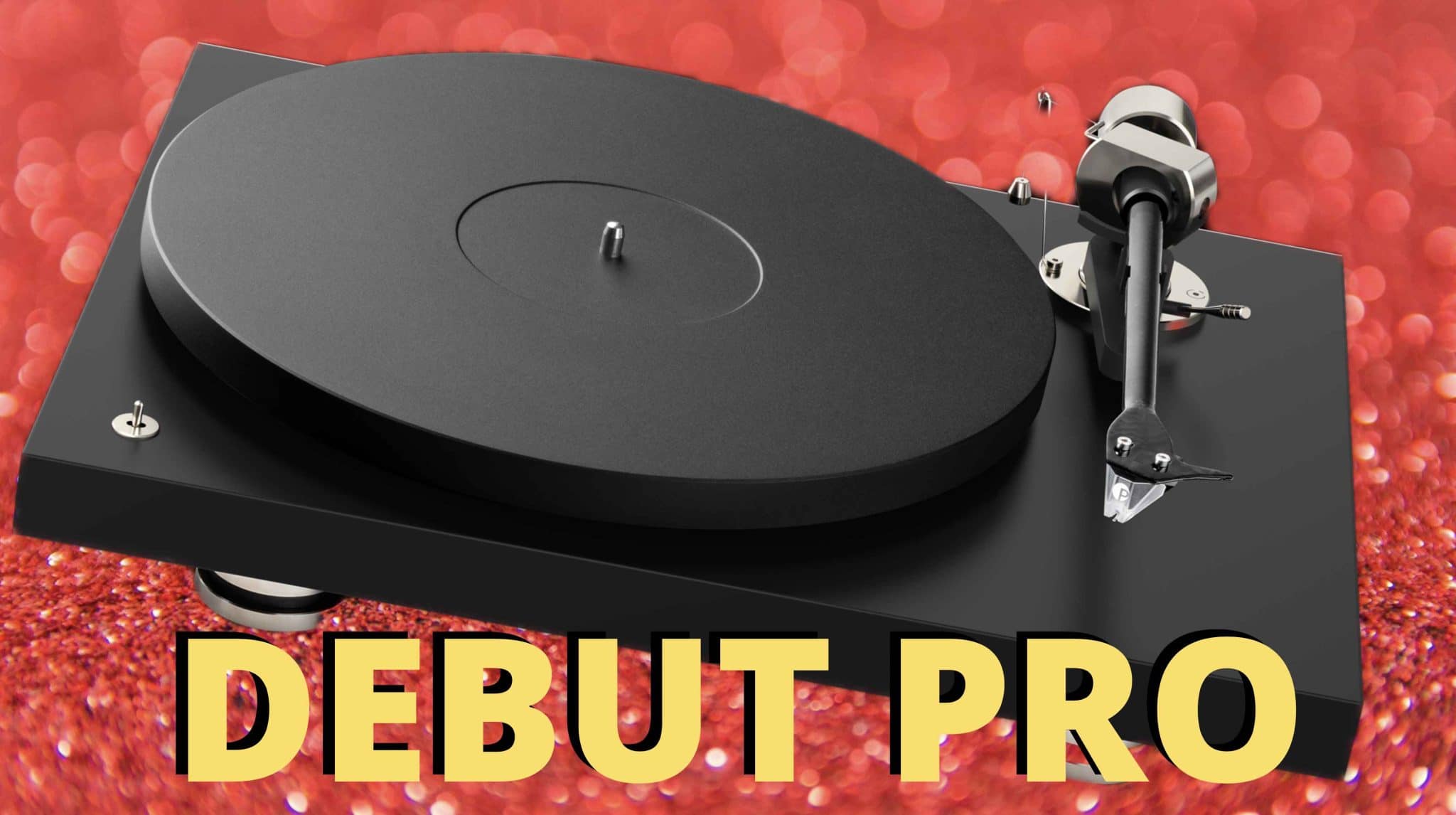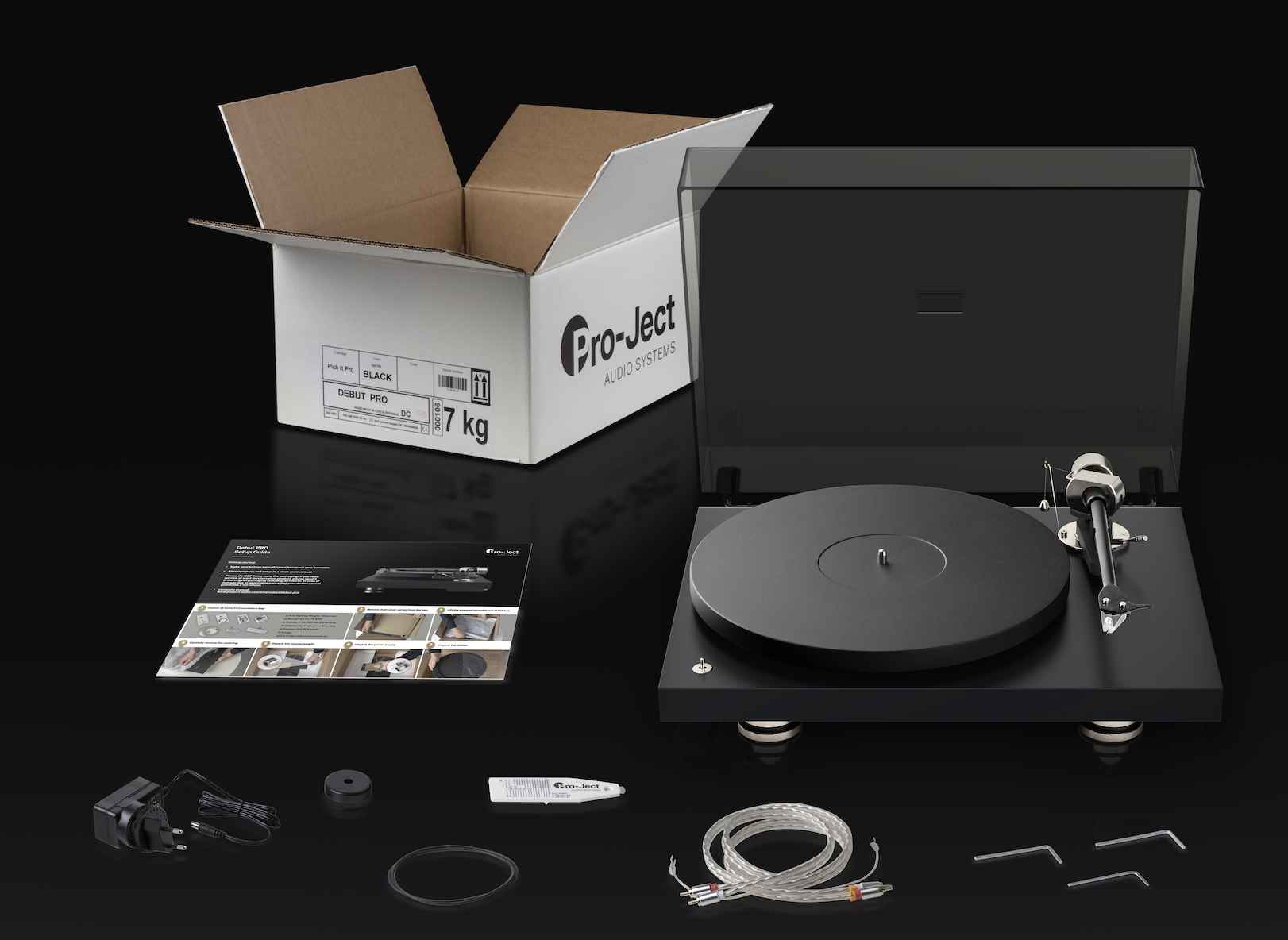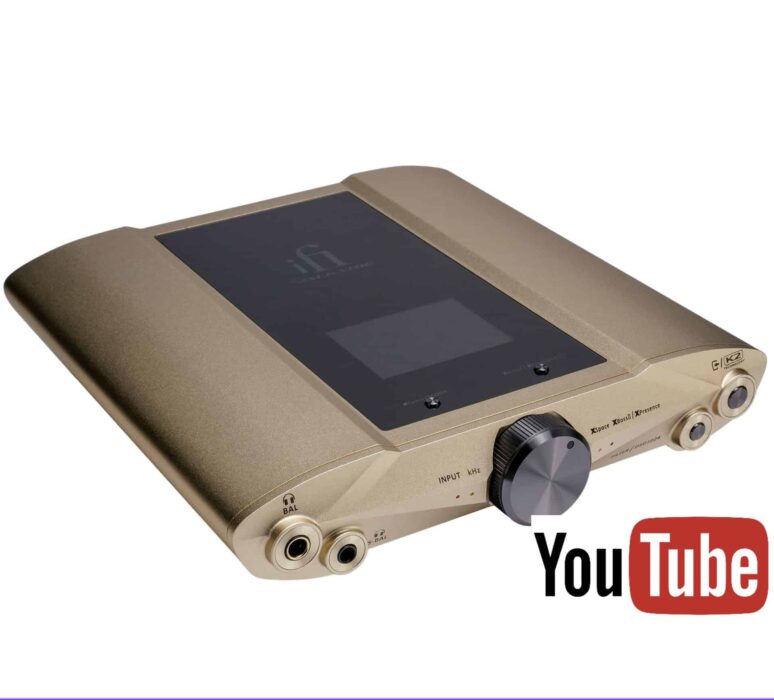The Article
DEBUT PRO FROM PRO-JECT ON YOUTUBE
30th January 2022

This turntable review also includes comparisons with the Rega RP3, the Roksan Attessa plus Pro-Ject’s own Debut EVO
The new Pro-Ject Debut Pro turntable is the top of the line on Debut terms.
[Want to stay up-to-date with The Audiophile Man’s published stories? Click the ‘Subscribe To Blog Via Email’ box, located on the top-right of this page (desktop) or keep scrolling on your mobile to find the same and make sure you never miss a news piece, feature or review!]
To see the video on YouTube, click:




Hey Paul
Just a suggestion. New music intro and between segments plays much louder than your voice. Outro music seems just right. Hope this helps.
Beale
Not a direct reply to Debut Pro turntable – wasn’t sure how to send a general email to you.
Hello Paul – always enjoying your reviews and comments. I am commenting to an old post here because I could not find an email I sent to you last year – and you kindly replied – about a Canadian firm developing an LED light for turntables. Meanwhile I recently installed the Origin Cartridge Enabler and I have retraced back to your review, and am taking the opportunity to respond to the Enabler review and make a further comment about the LED lighting. With the Enabler – I agree with everything you said about it. However, I am trusting my ears on this one as i only tried it for several listenings before doing other tweaks – but NO WAY am I going to disengage it and try another AB test. Why? Because I am convinced there was a substantial opening up of the Music – at both ends – and I did not necessarily expect this as the headshell of the cartridge I am using has Australian Jarrah hardwood, and I thought this might be enough damping. However…… not to be – the Enabler really made a difference. AND – secondly; although the process of installing it looks easy, it is such a pesky fiddly thing to put on (allow an hour or so!)- especially with my shaky hands – no need to disconnect the cartridge the instructions said – Yeah, right – I don’t think I could have done it without carefully disconnecting the 4 cartridge wires to let the cartridge hang a little. So it the Cartridge Enabler is NOT coming off!
I also wanted to follow up on the Canadians investigating LED lights for turntables. Since you wrote this and I responded, I have continued using a very bright LED light above the record and have added a third “not so bright” LED lamp. This makes 2 “ordinary” mains powered LED’s and a very bright (Don’t direct it to your eyes strength) battery operated LED. Turn them off and the record looks clean. Put them on – especially the bright one – and you can see the fine white dust. I wanted to share my experiences with you as you are one of the few people out there in internet land who I think has a proper grasp not only of how to clean vinyl, but also the importance of it. Originally, I was having trouble removing this dust with a microfibre brush as it was so fine the static electricity would bring it back onto the playing surface. Since I have been using an Audioquest carbon fibre brush, and this has not been a problem as this brush cancels out the static. (Oh, how I wish I could get a Decca Microfibre brush from way back when – but the Audioquest brush is probably as good as the Decca – and possible even a bit better at “destaticking”. ) From under the LED light I would like to share these observation with you -made over the last several months. 1. It is very apparent is that there is more of this fine dust from at least the first 1-2mm of the record . The dust will be over the whole record, but even more concentrated in the lead in groove and the subsequent grooves. 2. The fine dust also tends to be in the gap between tracks. 3. The difference in the sound of the record by getting this fine dust out is astounding. 4. The difference may not be immediate – as this is a process that can be over several plays. 5. It is important to clean after playing – as the stylus will bring more of this dust up. 6. I use a coarse brush first (Osage) – I know you recommend something similar in your advice on record cleaning. I use felt brushes – in my case, “leftover” brushes from earlier days of applying “Last” to records, and accumulating the applicator brushes. Then a carbon fibre brush is used to clean it up (The Audioquest) The felt brushes will clear the fine dust but will also sometimes leave dust on the playing surface – and this shows up as a speckled effect. After the carbon fibre brush has removed this, the vinyl should be a glossy black. 6. The process means that some vigour is needed – and it can also be quite time consuming. This means that the surface of the record does get scuffed, so under a bright light you can see the scuff marks – I liken it to polishing a car – It’s hard not to get “swirls”. Anyway, with due care, these scuffs are not serious enough to compromise the sound in any way. (I remind myself – I have the record to listen to – not to sell at some date in the future when a buyer might look at it and evaluate it by the surface marks). And I know, you cannot judge a record by looking at it! A record with a pristine surface can be damaged and a scuffy record can be quite OK. We listen to the grooves, not the surface! Having said all that, the results are well worth it. Of course, occasionally some more muscle is required, and this might be in the form of a record cleaner for very hard to remove dirt etc. 7. Like Rome not being built in a day, records cleaned like this are not cleaned in one attempt. Repeated playing will bring more fine dust and with the repeated playing and cleaning the record will keep sounding better, At some point, all that will be required is a quick wipe with a carbon fibre brush just to get that dust that sits on the surface anyway – even if just from the time the record is removed from its sleeve and placed on the platter. 8. The amount of dust on records can vary immensely and I certainly have no explanations of this. I am playing records from the early microgroove recordings of the 1950’s to the modern recordings. It does not seem to matter what the record age is, (brand new to the early days of microgroove) or who made it or where it is from. The only aspect I have noticed is that the “Promotional” copies I have had SEEM to be somewhat cleaner, but I really have not seen enough of them to make any further comment than that.
If you have time to reply to this, it would be greatly appreciated. As more people come to experience vinyl (and have much better equipment) I believe getting that vinyl clean is more important than ever. Just as we now realise the importance of cables for example, I think the proper cleaning of vinyl is also very important – and getting rid of snaps, crackles and pops is only a small part – it is fidelity we are chasing!
May I just finish by saying that a clean record can sound as different as any of the major tweaks.
Hoping you can find time to reply to this, Paul.
Brett Barton
Thanks for this Brett and thanks for sharing your methods – do you have a view on the Disco Antistat and surfactant-assisted cleaning the I talk about and recommend in my Cleaning Guide.Just wondered, I appreciate you have your established methods and they might not be for you.
Also, do you use a belt drive turntable with the belt riding around the outside of the platter? If so, that would explain the dust build up around the outside of your disc. Using a static meter, I found that the highest static build ups are around the outer platter/record edge where the constant belt movement/friction maintains a high static level during play, the pulley and the central bearing are other hotspots. But the outer area is the big issue. Again, this is why I recommend an anti-static gun.
Wholly agree with your last ‘major tweak’ point.
To Paul … Thank You for your quick reply. I read with great interest your writing on Disco Antistat and surfactant assisted cleaning. This was a major reason why I sent my comments to you, as from my research you are one of the few who really understand what cleaning vinyl is about. Interestingly, the turntable I use is direct-drive and I really wonder how much pressure on the platter a belt drive could take. I have often thought of getting a 2nd hand turntable just for putting the records on and giving them a good clean without worrying about bearing damage or whatever extra wear one can put on the turntable. I support the platter with foam and wooden wedges, so the pressure is taken on the springs. I actually put off writing to you about this as I wanted to convince myself that I was not imagining this or overplaying its importance, so over about 6-8 months I observed what was happening over a range of records. I found it made no difference as to what as to how old the record was, where it was from or even how it had been kept – some of the 2nd hand ones were pretty dirty! Today I have just cleaned a 1977 recording that I don’t remember having listened to at least for a long time – maybe 40 years. (Some would say OCD – but actually I have cards for the records, and make brief notes on their overall sound on the computer after each play. This means that changes and tweeks are also recorded, so I can get a general picture of what is going on.) This particular record looked clean. To most people, all it would have needed was a quick brush to get the main stuff and it would have seemed OK. However, under the the LED lamps after a good firm brush with a felt brush – (after a coarser brush), and then the carbon fibre brush and all that fine muck started coming to the surface. And after this is done, the music opens right up – as you know. That of course is not the end of it – it will probably have a few more “deep cleans” before I am really satisfied.
I am really interested also in the record cleaning machines available. Having had no experience whatsoever with these I am very skeptical about their value – after all for the really good ones you could buy a lot of records! My main skepticism is from finding it difficult to believe vacuuming would be strong enough to remove dust from the tiny grooves. I have yet to try the surfactant cleaning you have described, and look forward to trying that some day. The method I use is relatively inexpensive, but is time consuming – not a problem for the last two years (almost) because of covid and spending almost all the time at home. Maybe I should also try an anti-static gun as you have recommended. I had one (many years ago) and I did not think it did anything. Perhaps they have been improved a lot. However, it does seem at this point, observing the records closely over 1-2 years, and repeated plays, that once they are clean, static does not seem to be a problem. the point you made about measuring static buildup is very extremely interesting —- could it be traced back to the manufacturing process?
The irony of all this – here we are, passionately discussing a now considered old technology that due to our modern understanding of vibration, electricity flow, our access to excellent equipment, and such fine engineering, we are able to hear any microgroove recording in a way that people of days gone by could only dream about!
Kind Regards
Brett
Always looking forward to your reviews and comments.
🙂 Indeed!